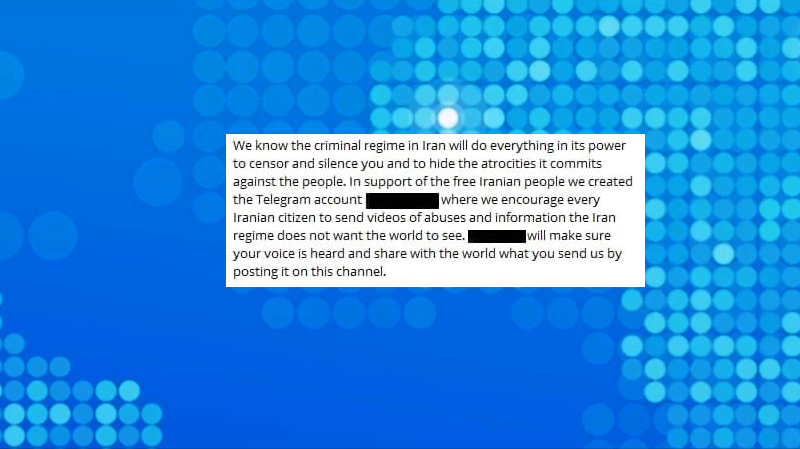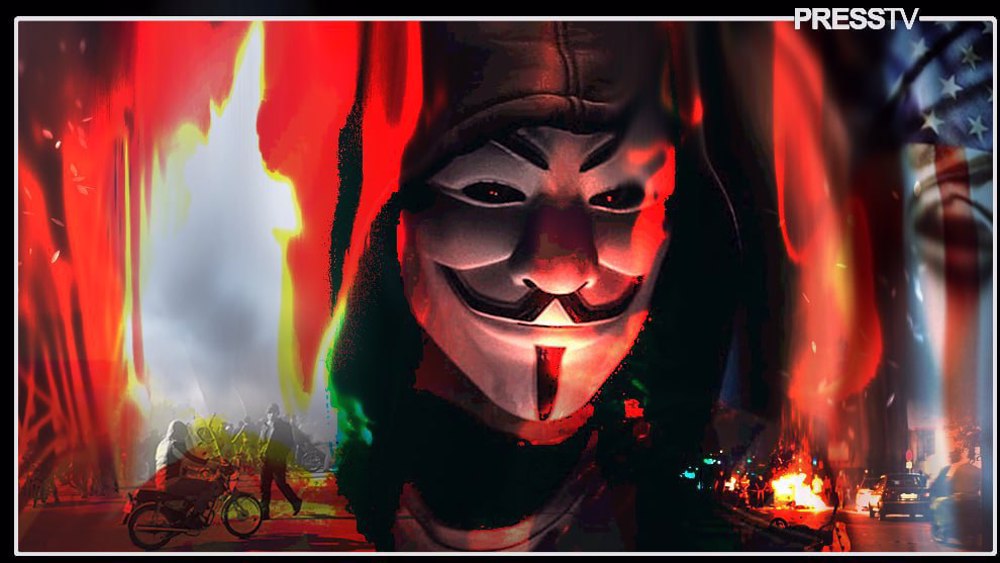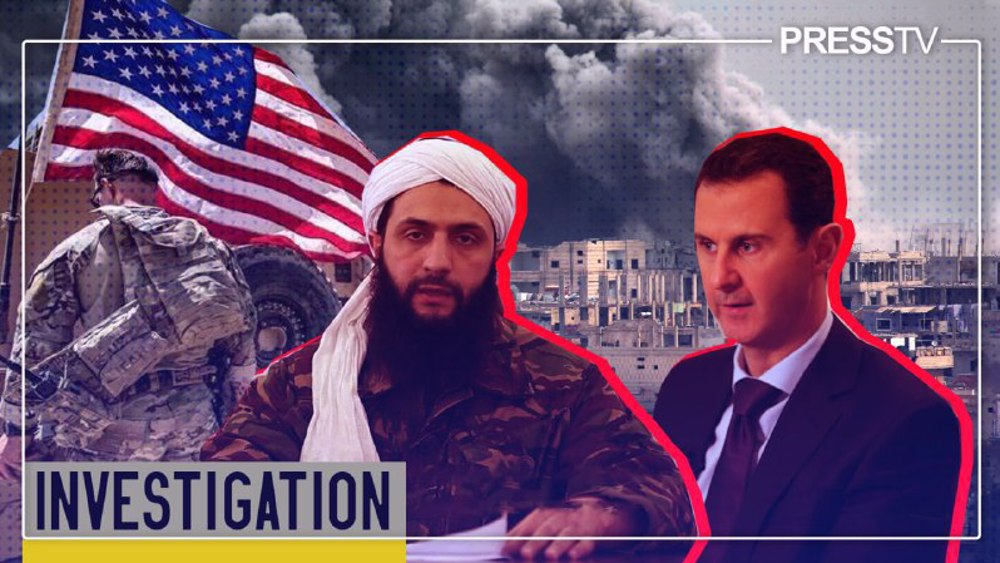Murky web of online and offline ‘regime change’ plotters targeting Iran
By Kit Klarenberg
On September 16, the second day of the Shanghai Cooperation Organization (SCO) summit in the historic Uzbek city of Samarkand, China’s President Xi Jinping called on members of the Central Asian grouping to work together to prevent “external forces” from instigating “color revolutions” in the region.
Believing the prospect to be a major risk in the near future, as part of this joint effort, the Chinese leader offered to train 2,000 specialist police officers at a regional training center in order to “strengthen law enforcement capacity building” among member nations.
His comments were eerily serendipitous, for, within hours, hordes of demonstrators took to the streets of Tehran and other major Iranian cities, indulging in violence and vandalism.
A week on, despite several million-strong counter-demonstrations by government supporters and arrests of key agitators, the unruly and directionless protests show little sign of abating. Despite widespread barbarity targeted at civilians and authorities alike, such as the destruction of an ambulance ferrying police officers away from the scene of a riot, many protesters claim to be motivated by human rights concerns.
For residents of the former Soviet sphere, these scenes will be familiar, and indeed ominous. After all, it is in these lands where, since the turn of the century, multiple governments have been ousted in color-coded uprisings - for example, Georgia’s 2003 Rose Revolution, Ukraine’s 2004 Orange Revolution, and Kyrgyzstan’s 2005 Tulip Revolution.
Invariably, they began as massive street demonstrations, which quickly turned incendiary following inevitable responses from local authorities. Invariably too, they were framed in the Western media as spontaneous, organic explosions of popular will, motivated by overwhelming local demand for human rights, democracy, and freedom.
In every case, what replaced the ousted administrations were autocratic and unpopular Western-backed regimes, which did nothing to advance the causes of humanitarianism, progress, or liberty, but only worked to further Western ideological and financial interests, supplant national sovereignty over key industries, and economic sectors, and reduce their countries and citizens to vassals of the American empire.
The key driving force behind these “revolutions” was the National Endowment for Democracy (NED), a US government agency founded in November 1983. Then-Central Intelligence Agency director William Casey was at the heart of its creation. He sought to construct a public mechanism to support opposition groups, activist movements, and media outlets overseas that would engage in propaganda and political activism to disrupt, destabilize, and ultimately displace ‘enemy’ regimes.
Such activities were traditionally the CIA’s purview, but embarrassing scandals throughout the 1970s forced the US to consider more public means of achieving its malign ends. The insidious nature of NED was confirmed in a 1991 Washington Post article, which outlined how the agency conducted “spyless coups” abroad through “overt operations”, by openly funding anti-government elements.
“Covert funding for these groups would have been the kiss of death if discovered. Overt funding, it would seem, has been a kiss of life,” the newspaper stated.
That article also quoted at some length senior NED official Allen Weinstein, who acknowledged: “A lot of what we do today was done covertly 25 years ago by the CIA.”
‘Propaganda discredits the transgressors’
In 2015, Russia banned NED from operating on its soil, a move framed by the Western media as a tyrannical crackdown on civil society. Many other countries have followed suit since, particularly in the Global South, the segment of the world most at-risk of Endowment-sponsored meddling.
The Islamic Republic of Iran, for obvious reasons, has been the prime target of the US-funded ‘regime change’ organization. Its grants database shows that between 2016 and 2022, it sponsored 51 separate projects at a cost of almost $5 million in the country.
For instance, $45,000 was committed to an unnamed organization for “human rights monitoring and documentation,” in order to “raise awareness about human rights and strengthen the capacity of human rights defenders” in the country.
Around $70,000 was used to finance a “human rights law journal” to “raise awareness among lawyers and civil society actors about the rule of law and civic rights and to foster debate” among “lawyers, law students, and clerics,” on “democratic reforms.”
As CIA whistleblower Ralph McGehee once explained that stoking fraudulent concerns about human rights is a well-established US Trojan Horse strategy, and the first stage in an NED-run regime change operation.
“The US administration either influences or creates new human rights organizations which declare a non-compliant country in violation of human rights. Propaganda discredits the transgressors. As soon as a government has been appropriately demonized, diplomatic, political, propaganda, media operations, and economic measures are applied to force the target country to toe the line. When the target nation lessens political restrictions, the NED, USAID, the World Bank, etc begin overt or covert operations to modify or replace governing authority,” he stated.
That the NED is keeping a close eye on events in Tehran is evident. On September 22, the organization urged those interested in “coverage of the rising protests in Iran” to follow its grant recipient, the Abdorrahman Boroumand Center.
The terms of the organization’s NED grants show it has received hundreds of thousands of dollars since 2016 to “promote human rights and democracy education, discourse and advocacy,” and “monitor and document human rights violations, publicly disseminate its findings, and advocate for greater accountability to international treaty obligations as well as for victims of human rights violations.”
In other words, it is now doing the job it is funded so lavishly to do.
Abdorrahman Boroumand Center’s work no doubt augments NED’s attempts to engage and weaponize lawyers in Iran as footsoldiers. In recent decades, “lawfare” has become an increasingly popular destabilization tactic for Washington, with often absolutely devastating effects.
Brazil’s Operation Lava Jato saw numerous popular left-wing political figures jailed, and successful domestic companies crippled on bogus charges of corruption, in turn wreaking havoc on the country’s economy, and ushering in the rule of Jair Bolsanaro.
The Lava Jato taskforce were hailed by mainstream journalists as crusading heroes on a righteous crusade to purge Brazil of financial criminality at the country’s highest levels. In reality, the taskforce was itself comprised of corrupted lawyers, who received extensive training and direction in their activities from the US Department of Justice and Federal Bureau of Investigation.
In private conversations via the Telegram app, they boasted of how the arrest and imprisonment of former Brazilian President Lula da Silva was “a gift from the CIA.”
Now a free man after spending 580 days in jail, his vexatious convictions have been overturned, and he is now the clear frontrunner in polls ahead of the country’s impending Presidential election.
NED also has a track record of engaging in such activity. In September 2003, the organization granted the Washington-based Center for Justice and International Law $83,000 to train Venezuelan citizens in launching legal actions against their government via the Inter-American Commission and Inter-American Court of Human Rights, a little-known yet extremely powerful US and Costa Rica-based legal nexus that claims jurisdiction over the entirety of the Americas.
This led to a dramatic surge in frivolous claims brought against the Venezuelan government by opposition activists, all of which circumvented the country’s legal system and undermined its sovereignty, granting power of judgment to a foreign-run body.
‘Dark arts of espionage’
Turning back to CIA whistleblower Ralph McGehee’s testimony, he revealed that another core component of US regime change programs are “false evidence operations,” in which discrediting documents are forged, and placed “where they will be discovered and distributed,” in the process “glorifying demons and demonizing targets, even the most honorable.”
One of the key means by which the CIA circulates such material today is via hacking, and hacking groups - and Iran has been confirmed by Western news sources as being in the crosshairs of the Agency’s efforts in this regard.
In 2018, then-US President Donald Trump authorized Langley to “run wild” and conduct “much more aggressive” cyber activities against Tehran, which led to a welter of “hack-and-dump operations” and “cyberattacks on Iranian infrastructure” with “less White House oversight” than before.
Since the recent unrest erupted in Iran last week, hackers have again targeted the country in droves, with illicit material and claims of cyberattack success being widely shared on Twitter accompanied by the hashtag “#OpIran”.
Analysis by digital disinformation specialist Marc Owen Jones indicates that many of the accounts involved were registered following 16 September, and many hundreds of accounts using that hashtag have been created every day since, raising the obvious prospect they are bots or trolls, centrally controlled by shadowy actors unknown.
It may be significant that on September 19, the Washington Post revealed the Pentagon’s Centcom unit, which covers all US military operations across the “central” area of the globe, was auditing all its psychological warfare activities online, after a number of fake users managed by the division were exposed publicly, and banned by Facebook. Among the accounts taken down was a bogus news platform sharing content published by US propaganda outlet Voice of America Farsi.
An ostensibly private group of hackers has gone to the extent of creating a dedicated Telegram channel, where Iranian citizens are encouraged “to send videos of abuses and information the Iran regime does not want the world to see,” pledging that the collective would “make sure your voice is heard and share with the world what you send.”

Here, we see how separate Western psychological and digital warfare strategies might intersect, and complement one another. In the process, the likelihood the tumult unfolding in Iran is foreign-borne, directed, and amplified, and ultimately concerned with unseating a troublesome government becomes a virtual certainty.
Kit Klarenberg is an investigative journalist and MintPresss News contributor exploring the role of intelligence services in shaping politics and perceptions. His work has previously appeared in The Cradle, Declassified UK, Electronic Intifada, Grayzone, and ShadowProof. Follow him on Twitter @KitKlarenberg.
(The views expressed in this article are the author's own and do not necessarily reflect those of Press TV.)
D-8’s role in Iran’s economy after Cairo summit
China slams US as ‘war-addicted’ threat to global security
China ‘firmly opposes’ US military aid to Taiwan
VIDEO | Press TV's News Headlines
President Yoon Suk Yeol to be removed from office
At least 19 Gazans killed by Israeli airstrikes since dawn: Medics
Leader: Iran neither has nor needs proxy forces
US fighter aircraft shot down ‘in friendly fire’ amid aggression on Yemen










 This makes it easy to access the Press TV website
This makes it easy to access the Press TV website